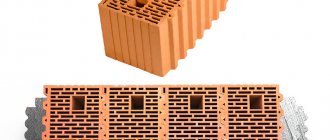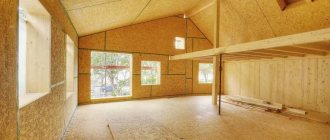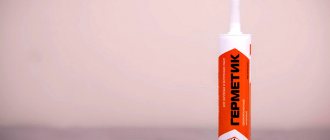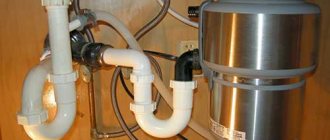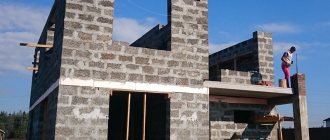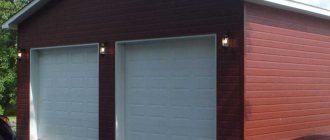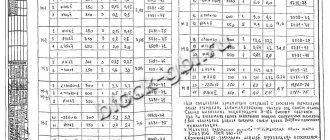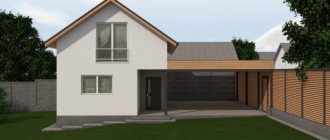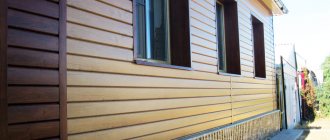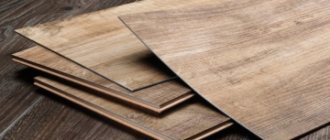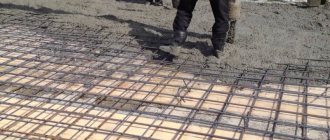A new product made from wood residues (chips) and concrete appeared on the construction market quite recently, but has already won its fans all over the world.
Arbolite panels are rectangular gray structures of specified dimensions, found in several varieties.
They are used for load-bearing walls, partition walls, and are also used as additional thermal insulation.
Arbolite panels are lightweight, considered seismically resistant and inexpensive. Where the products are used, what their characteristic features are, pros, cons, installation and other nuances, we suggest you find out from the proposed article.
Description of wood concrete wall slabs
Natural wall products made of wood concrete:
- are considered vapor permeable;
- have low thermal conductivity;
- keep warm well, even in northern regions.
The environmentally friendly composition of the material does not emit harmful substances into the atmosphere, is easy to process and combines well with all building materials.
Walls made from arbolite panels are quite strong, have sufficient ventilation to create a “breathing” layer, are considered non-flammable (due to special treatment with fire retardants), and protect well from noise and extraneous sounds.
The composition is represented by the following combination of components:
cement of good brands (M300 – M500 and above) – 10%;- wood chips, or haylage, hemp meal (with a length of 2-20 (mm) x width of 2-5 (mm) x thickness of up to 5 (mm) - 80%);
- water – from +15°С (for uniform mixing of components) – 7%;
- additives (lime, liquid glass, calcium chloride, alumina, as well as antiseptics that protect against the formation of rot and fungi) - 3%.
Wood concrete slabs come in different sizes. They can be made according to individual orders.
Common standards are (length x width):
- 2600-2800 x 600-800-1000 (mm).
- A large slab in size can be: 6200-8200 x 800-1000 (mm).
Arbolite panels belong to the category of lightweight concrete . The composition is prepared in industrial production conditions. To do this, all components of the mass are mixed into a homogeneous composition, loaded into special molds, compacted and pressed using vibrocompressors for 20 seconds, so that the filler and binding elements do not have time to separate into fractions and lose their quality characteristics.
The finished slabs are dried in the open air for several days, at a certain humidity and temperature, thanks to which the products can gain brand strength.
The design includes the following layers:
- outdoor (decorative);
- reinforcement frame;
- insulation;
- trim panel;
- mounting loop.
Wood concrete products are made in such a way that they are connected to each other using grooves or locking (mounting) loops. During installation, the grooves are easily connected to each other, and the mounting loops are welded to the base (posts or corner fastenings).
Since arbolite walls absorb water well, the base of the building, which includes the use of these products, is made of a different material.
Regulatory Requirements
Technological standards for wood-concrete material are included in a number of documents. These include :
GOST 19222-84 (all types of wood concrete products, requirements for labeling, packaging and storage) is the main document that provides reference to lower standards;- GOST 10181.2-81 (determination of the density of concrete products during testing);
- GOST 10180 (compressive strength of concrete);
- GOST 7076 (thermal conductivity determination);
- GOST 13015 (appearance and weight of wood concrete material);
- GOST 13015.3-81 (quality requirements for concrete products).
The new GOST 19222-2019 (about wood concrete and products made from it) includes technical conditions from all of the above-mentioned current regulatory documents. This document clearly stated that wood concrete is lightweight concrete, defined its types and conditions of use.
How to choose a wood concrete block
When you are faced with the process of choosing this lightweight material, you need to take into account a number of established factors that will influence further operation. These include:
- Wood chips must be present in the wood concrete composition. It is best to use a coniferous component due to its good composition. Also, the length should be 5 times the thickness.
- The best block consists of cement, the grade of which is equal to M500 or higher. Other types will not be suitable due to low strength.
- Technological process. Manual compaction is not effective enough for the wood concrete element. It is best to use mechanical methods.
- Special attention should be paid to curing in formwork, which should be at least 24 hours.
- All edges must be uniform.
- Quality must be confirmed by certificates.
- Special attention is paid to the dimensions of the wood concrete blocks. Deviations should not exceed 5 mm on each edge.
- There should be no white coating. He says that glue was added to the mixture. This parameter should not be present.
- According to its external characteristics, arbolite bricks should not be smooth. Otherwise, this means that the mixture was not wood chips, but square sawdust.
How to identify high-quality wood concrete and not buy a fake
Among all the arbolite elements you can often find a fake. That is why it is better to define in advance some criteria by which it is possible to determine quality. These include the following characteristics of arbolite blocks:
- Low cost. If the material is of high quality, then not a single manufacturer will sell it for the construction of load-bearing walls at a price that is lower than the market price. A decrease in the indicator indicates that the composition contains unacceptable components. Chips are replaced with other components of wood waste, and useful additives with chemical mixtures.
- The material should not delaminate by mass by more than 10%.
- There is no quality certificate or it is not genuine. But this parameter will not always guarantee reality. You can buy a certificate without any problems.
- The geometry is broken. This factor influences the fact that either sawdust was used, or the molding took place in the wrong way using the wrong manufacturing technology.
- The natural shade of wood concrete is gray.
And only when you pay attention to all the parameters will you be able to purchase a truly suitable element for yourself. It will be strong and durable, and without the use of chemical components.
Application in construction
most recommended to use arbolite panels to build buildings that do not have winter heating . These are all kinds of summer buildings, including cottages for vacationers, as well as summer houses.
This is due to the fact that the material has high vapor permeability, maintains normal humidity and a good microclimate, which means that such houses will be as comfortable as possible in hot weather.
But arbolite walls can be erected in any climate, even with cold winters. Conventional housing made of wood concrete, with the obligatory plastering and finishing, can become a good alternative to monolithic expensive housing.
In recent years, Russian construction companies have been offering the production and installation of arbolite frame structures for the construction of their own housing - house kits. In terms of price, such designs cost the same as a separate purchase of standard slabs.
The creation of a house from a house kit is carried out by companies according to the sketches and wishes of the client (area, wall height, location of rooms, etc.). At the same time, the client is allowed to choose the desired thickness in accordance with the required standards.
The advantages of a house kit are quick assembly of the project in 1-2 days, a guarantee from the manufacturer for the quality of workmanship and for the work performed.
Most often, wood concrete is used as internal insulation for walls made of brick or monolith, since it accumulates and retains heat well, as well as for interior partitions.
Any ancillary buildings in the courtyard of private houses or on the territories of enterprises can also be erected from wood concrete.
Arbolite panels are used for low-rise construction (2 floors - maximum).
Armopoyas
To tie the structure together and increase the strength of the building, a concrete reinforced belt is poured on top along the entire perimeter. For a one-story house, it will become the basis for the rafter system; for the second floor, it will become a support for slabs or floor joists and walls made of slabs, the assembly of which is carried out in the same way as the first floor, after the final maturation of the reinforced belt.
Wall design
The wall pie made of wood panel slabs consists of the following layers:
- ABOUT
facing part. Located in front of a structural wall. It can be represented by any decorative panels or blocks, or made of brick, concrete (grade M500 and higher). - A structure made of wood or high-quality steel, to which facing slabs were attached.
- Waterproofing layer. It is necessary due to the increased absorption of water by the material, as it protects against external atmospheric influences.
- Wood concrete panel. Installed on top of each other, with fastening along the grooves, using anchor fasteners.
- Waterproofing layer (optional). You can use roofing felt.
- Ventilation gap (20-40 mm). Improves microcirculation of air in the walls.
- Insulation (if desired). We recommend mineral wool or eco-cotton products foiled on one side. But you can also use polystyrene material.
- Reinforced mesh, with cells 30-50 x 30-50 (mm).
- A layer of plaster material, and then finishing putty.
Arbolite walls need wooden supports and high-quality plastering - this will help them last longer.
Some porous wood concrete slabs are produced with a finished facing layer , which is made of sand-cement plaster, with a thickness of 1.5 cm. Such products greatly facilitate the work with external finishing. The total wall layer should normally be 400-600 mm.
The thickness of the structural pie of the wall can also include layers of applied mortar. The use of cement-sand or adhesive mixture cannot be more than 20 mm.
Frost resistance
The gradual destruction of products during freezing and thawing occurs as a result of the expansion of water freezing in the voids. The more water they contain, the fewer freeze-thaw cycles the material can withstand without destruction.
Low sorption moisture absorption gives wood concrete good resistance to freezing. The minimum value is F25 and goes up to F50. Protecting wood concrete from direct exposure to moisture allows you to increase the actual frost resistance of the material in the structure. In addition, there are real examples of the operation of buildings made of wood concrete for 7 - 10 years without damage to the walls. Moreover, we are talking about walls that are not protected in any way from the influence of external environmental factors.
Types of products
The main types of wood concrete slabs according to their purpose and functions are divided into :
- Structural (main load-bearing, external). It can also be used simultaneously with reinforced rods for lintels over door and window openings, as well as to create an armored belt under the roof.
- Structural and thermal insulation (interior, partition).
- Thermal insulation. They are used as insulation or a second layer of blocks laid behind the main one. Suitable for insulating all types of load-bearing and partition walls, as well as floors.
According to their appearance, wood concrete panels are divided into:
- Tongue-crested. Used for lintels and partitions.
- Hollow. Designed for laying reinforced elements in them. Voids account for 45% of the total volume.
- Facial. They are always finished with a layer of concrete on one or both sides.
Also, wood concrete panels differ in their dimensions :
- Big ones. Needed for the main wall canvas: 230 x 118 x 30-40 (cm).
- Narrow. Suitable for creating lintels: 230 x 60 x 30-40 (cm)
- Window sills. They arrange the lower part of the wall under the cut opening for the window: 80 x 60-118 x 30-40 (cm).
shapes are:
- rectangular (standard view);
- triangular;
- trapezoidal.
The shape of a triangle or trapezoid is needed to create structures of non-standard shape, for example, for pediments. The manufacturer cuts non-standard shapes with a stone-cutting saw from rectangular slabs, or makes them to order.
Arbolite products are marked depending on the type. The manufacturer specifies the following markings for panels:
- PS – wall (600-900-1200 x 2400 x 400 (mm);
- PPS - window sills (300-600-900-1200 x 600-800 x 400 (mm);
- PSP – jumper (2400 x 600 x 400 (mm).
The dimensions, appearance, and configuration of the panels may differ from each other, depending on the manufacturer, but all the slabs have one important feature in common - the groove system ensures the creation of a dense wall structure that eliminates the formation of cold bridges.
It is easiest to work with wood concrete slabs using lifting equipment, and reinforcement fastening loops are best joined by welding. But since the blocks are not heavy, you can work with them without equipment.
Specifications
Wood concrete slabs have the following characteristics :
Thermal conductivity – 0.07 – 0.16 W/(m*C). A low indicator indicates a high heat-saving ability.- Density – 700 kg/m3. The material does not crack and holds its shape well.
- Strength – M25. A good indicator indicating the brand of the panel. It is ensured by a successful combination of the main components and binders.
- Frost resistance – F With walls made of wood concrete, frosts are not terrible.
- High water absorption properties (75-85%). Can only exist at a certain humidity.
- Versatility. It is characterized by a wide range of uses due to the variety of products.
- Environmental friendliness. The completely natural composition does not pollute the environment and does not cause allergies in humans.
- Resistance to fire – 1.5 hours. It does not ignite itself.
- Light weight 18-22.5 kg. Provides convenience and ease of installation. Sawing without problems.
- Low noise and sound permeability – 126 – 2000 Hz.
- Shrinkage – 0.5%. It is practically not felt and does not put any load on the foundation.
- Vapor permeability – 0.11 – 0.35%. Good microcirculation of air in the room is ensured.
All large-format porous wood concrete slabs have a density from 400 to 850 kg/m3 . Moreover, their thickness ranges from 40 to 60 (mm), and higher.
Panel walls, after being erected in rough form, can stand without finishing for several seasons in a row. Then the surface of the panels must be protected.
Calculation of the required quantity
You can make calculations on the amount of wood concrete material used using an online calculator, such as the one on the website.
The calculator calculates the number of slabs, taking into account:
- required wall thickness;
- width, length of the future building;
- height of the house;
- taking into account the dimensions of the pediment (width, height, quantity);
- sizes of window and door openings (width, height and number - volume);
- market price for wood concrete slab;
- volume of walls in m3;
- taking into account the thickness of the masonry mixture (8-20 mm).
It is best to entrust the calculations to professionals from a service construction company or a local architectural office. When doing your own calculations, an example of material calculation may look like this:
Given:
- house with sides 8 x 8 (m);
- thickness of load-bearing walls – 0.3 (m);
- thickness of internal walls – 0.142 (m)
- floor height – 3 (m);
- length of the walls from the inside – 7 (m);
- wall height – 2.8 m;
- windows (6 pcs.) – 1x1.2 (m);
- doorways (2 pcs.) – 0.7 x 2.1 (m);
- entrance door – 1 x 2.1 (m);
- gables (2 pcs.), height – 1.8 (m).
Solution:
- Find the length of all sides of the house (perimeter): 8 + 8 + 8 + 8 = 32 (m).
- We determine the cubic capacity of the building - we multiply the perimeter data by the height and thickness of the wall: 32 - 3 x 0.3 = 28.8 (m3).
- We calculate the cubic capacity of the pediments - multiply the length with the height of the pediment, then divide the resulting number by 2, and multiply by the total number of pediments, and then by the thickness of the wall:
- (8 x 1.8/2) x 2 = 14.4 (m2);
- 14.4 x 0.3 = 4.32 (m3).
- We determine the location of the openings - the width, height of the window, wall thickness and the number of all windows are multiplied; then you need to multiply the width and height of the front door, along with the thickness of the door:
- 1 x 1.2 x 0.3 x 6 = 2.16 (m3);
- 1 x 2.1 x 0.3 = 0.63 (m3).
- We get the final amount of the required volume of wood concrete - add up the volume of external walls and gables, minus the volume of openings: 28.8 + 4.32 – 2.16 – 0.63 = 30.33 (m3).
- Answer 1: To build external walls with gables you will need 30.33 m3 of material.
If additional walls (interior) are planned in the room, then their total volume is calculated by quantity , and the resulting value is added to the value with gables:
- We determine the cubic capacity of the interior walls - you need to multiply the length, height and thickness of the walls from the inside: 7 x 2.8 x 0.142 = 2.78 (m3).
- We determine the volume of openings - you need to multiply the width and height of the door, the thickness of the walls and the total number of doors: 0.7 x 2.1 x 0.142 x 2 = 0.41 (m3).
- We calculate the total cubic capacity of all walls from the inside - you need to subtract the volume of openings from the volume of the walls: 2.78 - 0.41 = 2.37 (m3).
- Answer 2: To build internal walls you need 2.37 m3 of wood concrete panels.
- Now we add up 2 values for the amount of the resulting volume of wood concrete for the walls: 30.33 + 2.37 = 32.7 (m3).
- Answer 3: the total volume of wood concrete material is 32.7 (m3).
To get the number of slabs, you need to take the volume of slabs in a cube that will be used in the work (type, quantity per package) and multiply with the total volume of wood concrete material required for the construction of all walls according to plan. Typically, on the packaging, manufacturers indicate the volume of slabs of given sizes. Therefore, the necessary calculation and multiplication will not be difficult.
Experienced builders always recommend taking tile consumables with a little extra (+10-15%).
Technology of building a house from wood concrete
The installation procedure is to comply with the technological rules for constructing walls. The installation of products can be carried out only after the project has been drawn up and approved, a building permit has been issued, earthworks have been carried out to equip the pit and create a foundation, and time has been given for its shrinkage.
The following types of foundations are suitable
for the construction of walls made of wood concrete :
- tape (shallow);
- columnar with grillage;
- monolithic from slabs;
- pile-grillage;
- screw;
- TISE (piles with a heel base).
It does not take time for the pile foundation to shrink, but it will be necessary to fill and screed the floors, so work on the construction of slab walls can begin only after the floor has completely dried and gained strength (1-2 weeks).
A monolithic foundation does not require floor screed, it is the best, but the waiting time for shrinkage is 1 year. The strip base will need 6 months + pouring of the monolithic floor and drying time.
Before installation, in accordance with the plan, prepare all the necessary consumables and adhesives, check the presence of markings and the integrity of the slabs. The slabs are installed on a specially created reinforced belt (the first layer of concrete), after the floor has been double-sidedly waterproofed with roofing felt.
The belt is made according to markings, using formwork and pouring mortar into molds. Here they use reinforced rods with a diameter of 10 mm, forming corners, and filling the mold in the direction from them.
The reinforced belt should dry for several days. Then, according to the markings and a stretched cord, in a checkerboard pattern, using dressings and laying reinforcement in layers, wood concrete slabs are laid.
For this you need:
- install corner elements;
- install wall panels using cement mortar and additionally reinforce them along the entire length with wooden blocks;
- fasten the first layer of panels with anchors to the reinforced belt, check the reliability of the locking connections (tenon and groove, weld protruding reinforcement);
- lay the second layer and subsequent ones, up to the reinforced belt under the roof (with glue or foam), connect it to the underlying layer with anchors, cut off the excess parts with an electric saw;
- additionally fasten the panels with brackets (on both sides, 2 pieces each), using a special construction “gun”;
- when laying slabs, do not forget to immediately seal the seams with an adhesive solution or perlite concrete composition;
- The reinforced belt is made according to the type of the first layer - formwork around the perimeter, laying reinforced elements, pouring mortar;
- then you can begin waterproofing, cladding and plastering the walls.
Internal walls are erected by analogy with load-bearing (structural) walls, only on both sides the slab is secured with anchors, of which there must be at least 4 pieces per floor. The thickness of all mounted walls must be at least 30 (cm).
Wood concrete can be sheathed on the outside with any siding (vinyl, plastic, brick), as well as clapboard. The latter material will allow you to obtain ideal environmentally friendly housing.
Pouring the monolith
To fill monolithic walls, it is necessary to use a solution with a superplasticizing additive. You also need to take care of reinforcement, as when installing monolithic reinforced concrete. Metal elements will protect the structure from spreading under intense load and provide it with improved strength properties.
Reinforcement is made using steel, fiberglass or carbon fiber reinforcement with a diameter of 16 mm (for vertical reinforcement) or 8-10 mm (for horizontal reinforcement). The frame must be secured before installing the formwork. Otherwise, connecting the elements to each other will become more problematic.
All available materials are suitable for arranging formwork.
It can be:
- Cement particle boards.
- Walls from old cabinets or doors.
It is also possible to use a permanent structure made of polystyrene or foam. However, they will worsen the vapor permeability of wood concrete. The best solution is fiberboard.
Advantages and disadvantages
The advantages are the following features:
- Excellent fire retardant properties. The material belongs to the groups - non-flammability G1, difficult to ignite - B1, low smoke generation - D1.
- Resistant to biocorrosion (bugs, rodents, rotting) and external environmental influences, including chemical ones.
This property allows them to be erected anywhere in the world. Wood concrete does not grow mold and fungi. - Good compatibility with a range of building materials. Can be used in combination with any substances.
- Easy installation and transportation. It is ensured due to its low weight, as well as the structure (structural composition) of the panel, which allows it to be processed with cutting and installation tools, and it is easy to attach any elements.
- Small shrinkage (up to 0.5%). Thanks to this quality and lightness, it does not put a load on the installed foundation, and acquires high operating speed.
- Durability. Arbolite walls are predicted to last more than 100 years.
- No cold bridges. The slabs adhere to each other so firmly that it is easy to fill the seams with special glue or perlite-cement mortar.
- Versatility of use. Provided through a variety of products.
- Affordable price compared to monolithic products or brick.
Cons are considered:
- the need to use finishing materials and waterproofing;
- high water absorption capacity;
- low-rise;
- errors in geometric parameters.
Wood concrete panels have many more advantages than disadvantages, which indicates the good quality characteristics of the material.
Since many counterfeits of wood concrete panels have appeared on the construction market, it is advisable to order them from trusted manufacturers, whose products are labeled, certified, reliably packaged in cellophane, and have a guarantee.
Material shrinkage
It is believed that wood concrete is completely resistant to shrinkage. But small shrinkage processes are still present in the first months. Basically, they stop at the stage of block maturation in production. A non-critical reduction in the size of the block (by 0.4 - 0.8%) is possible after the blocks are laid in the structure.
Some reduction in the height of the blocks can also occur due to the weight of the overlying elements, floors and roof structures. To prevent problems with finishing, it is not recommended to carry out plastering work in the first 4 months after completion of the main work.
average price
The cost of wood concrete products consists of the materials spent on production, the dimensions of the slabs, the urgency of the order, the remoteness of the delivery location, and the destination (type). Average price of standard slabs per 1 piece. in the Russian Federation is from 600-700 rubles.
An approximate price list of average prices, as an example, can be seen in the table below:
| Purpose | Slab type | Dimensions (mm) | Price from (in rub.) |
| PS (wall) | PS 12.24.40-A | 1200x2400x400 | 7900 |
| PS 9.24.40-A | 900x2400x400 | 5900 | |
| PS 6.24.40-A | 600x2400x400 | 3900 | |
| PPS (window sill) | PPS 12.8.40-A | 1200x800x400 | 2900 |
| PPS 9.8.40-A | 900x800x400 | 2190 | |
| PPS 6.8.40-A | 600x800x400 | 1460 | |
| PPS 3.8.40-A | 300x800x400 | 730 | |
| PPS 12.6.40-A | 1200x600x400 | 2100 | |
| PPS 9.6.40-A | 900x600x600 | 990 | |
| PPS 6.6.40-A | 600x600x400 | 990 | |
| PSP (jumpers) | PSP 24.6.40/20-A | 2400x600x400 | 2 900 |
The most expensive regions of the Russian Federation are Moscow Region, Novosibirsk and Leningrad. In these areas, prices for panels will be more expensive compared to the Bryansk region or the city of Grozny.
The cost of installation of wood concrete walls, excluding manufacturing and delivery, depends on who will carry out the installation process - a construction company or hired workers . The company provides a price list for services, draws up a contract and guarantees quality. Hired workers will take half the price, but they will not be able to provide a guarantee of high-quality work.
The average cost of installing a panel wall made of wood concrete from a construction company, taking into account installation, anchoring, reinforcement and sealing of joints with mortars, is from 4,000 m3.
Where can I get straw?
This material is a waste product from growing various plants, so it appears after harvesting .
The main suppliers are large and small farms growing relevant crops.
The cost of straw directly depends on how much it is in demand on the farm itself.
After all, such plant waste, if there is nowhere to use it, requires special storage or disposal conditions , which results in costs for the manufacturer. Therefore, there is always a chance to get it, if not free, then very cheap.
You will find more detailed information on this issue here.
